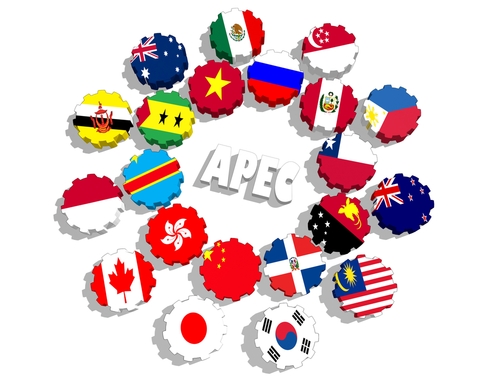China’s Place in Asia Post-APEC

Please note that we are not authorised to provide any investment advice. The content on this page is for information purposes only.
On 10 November 2014 a summit of the Asia-Pacific Economic Cooperation (APEC) forum will convene in Beijing, followed in rapid succession by the East Asia Summit in Naypyidaw and the G20 in Brisbane.
Much of what will be said and done at these events will implicate the tectonics of nascent global governance set in motion by China’s campaign for greater influence in Asia.
On 10 November 2014 a summit of the Asia-Pacific Economic Cooperation (APEC) forum will convene in Beijing, followed in rapid succession by the East Asia Summit in Naypyidaw and the G20 in Brisbane.
Much of what will be said and done at these events will implicate the tectonics of nascent global governance set in motion by China’s campaign for greater influence in Asia.
At the APEC summit, Chinese president Xi Jinping will stress the need for massive spending on infrastructure in Asia. He will tout China’s sponsorship of a Beijing-based Asian Infrastructure Investment Bank (AIIB) that would operate outside of, and potentially compete with, the American-led World Bank and the Japanese-led Asian Development Bank (ADB).
Many will welcome the AIIB as evidence of China’s willingness to assume responsibility for public goods in a rebalanced post-Cold War world whose needs exceed the resources of existing global institutions. But will ‘public’ goods benefit the public if their terms are not made public? In 2014 China ranked 68th of 68 donors in the Aid Transparency Index compared with the 5th-place ADB and the 7th-place World Bank. Given the commercial importance of cyberspace, it is also concerning that China is the worst violator of the rights of internet users in the latest Freedom House ranking of 60 countries on that variable.
In the ADB as of 2013, Tokyo held respective 16 and 13 per cent shares of subscribed capital and voting power. Understandably, at the AIIB’s inception, Beijing’s shares will be far larger. But how soon and by how much will China allow its initial dominance to be diluted by other contributing members? Concerns over Beijing’s intentions may already underlie the wait-and-see attitudes of Tokyo, Seoul, and Canberra as to whether to join the new bank.
Another alternative to international lending by traditional sources is the New Development Bank (NDB) recently innovated by the BRICS. Headquartered in Shanghai, it will be led first by an Indian.
In the formal sessions of APEC, lip service will be paid to its hopes for free and open trade and investment worldwide by 2020. But in the corridors delegates will debate whether China’s AIIB and the BRICS’s NDB will further ‘responsible stakeholding’ and shared governance by emerging states in a global economy no longer centred on the West. Some may fear that Xi wants to use these new institutions to tie Asia more tightly and deferentially to Beijing in a web of ‘Silk Roads’ that will disproportionally serve Chinese interests.
China’s ambitions will also be questioned at the East Asia Summit in Myanmar, especially regarding the South China Sea (SCS). China will again be asked to clarify its generously: Does Beijing really want to possess or control nearly all of that body of water? Southeast Asians will again urge China to implement the Document on Conduct (DOC) in the South China Sea that it signed with all ten members of ASEAN in 2002. China will again be implored to accept a future Code of Conduct (COC) regulating state behaviour in the SCS. But Beijing will likely continue to delay and demur, while ASEAN’s historic centrality to Asian region-formation continues to diminish.
It is symbolic of ASEAN’s plight that the group has been too divided to express more than ‘serious concern’ over ‘developments’ in the SCS — untethered abstractions that leave China happily uncharged. In ASEAN’s field of vision, the COC has become an entrenched mirage. Calls for a code are repetitively embedded in ASEAN’s communiqués because it is one of the few things the members can agree should happen. Thanks to Chinese foot-dragging, however, the goal keeps receding and Beijing keeps doing whatever it wants to in the SCS.
Chinese activity now includes a unilateral land-reclaiming and construction work at the specks that China already controls — actions that violate the spirit if not the letter of the DOC.
Some US$5.3 trillion in goods are shipped annually across the SCS, including US$1.2 trillion to or from the United States. China has unilaterally declared and begun to enforce a monopoly on fishing in more than half of the SCS. If multilaterally negotiated limitations are being flouted or forestalled in this key regional instance, how much confidence can one have that Xi will cooperate in Asia on behalf of a rules-based order at the global level?
None of this means denying the overdue need to restructure existing institutions to accommodate the voices and priorities of rising powers. But time is running out. Convincingly dire warnings in the just-released UN report on climate change render existential the need for concerted global action. Nationalism and nationalistic regionalism — by Beijing, Moscow or Washington — must not derail progress toward the constructive rebalancing and sharing of global governance. Shifting power to emerging actors should facilitate not frustrate that process. The twenty-fifth anniversary of the fall of one wall in Berlin should not be spent building another in Asia.
Meeting the challenge of China’s rise in Asia is republished with permission from East Asia Forum




